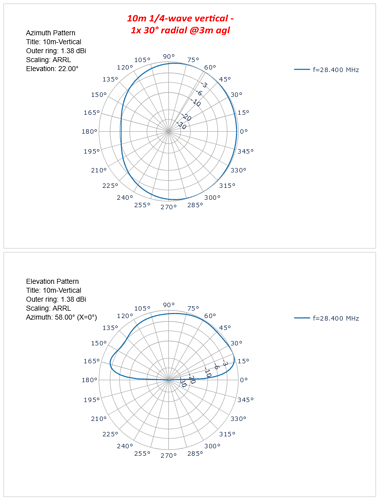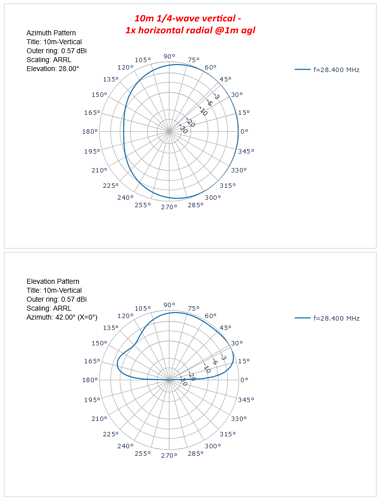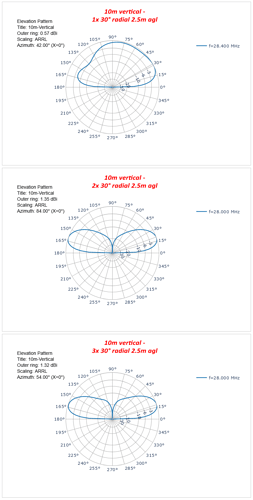Thank you Ludwig for your description. I agree with most of it. You speak of a ground plane but don’t link it directly to the word ‘counterpoise’ (which I think is an example of a GP). So, I’ll summarize what I believe is the distinction between radials and counterpoise wires.
As before, I welcome antenna experts to correct or add to this description.
Radial(s)
Form the other ‘pole’ for a monopole vertical to create a (compromised) dipole. I read contradictory information as to whether or not the radials themselves radiate. IMHO they appear to be connected to one side of the transmission line (e.g. coax feeder) so are ‘driven’ elements. So, I conclude they do radiate albeit less effectively than the resonant monopole.
Like all dipoles, no ground connection is needed (dipoles work perfectly in free space).
As one half of a dipole, you want them to radiate RF energy. Therefore, they should have a ‘tuned’ length e.g. 1/4 wavelength and raised as high as practical to avoid RF being absorbed by the ground.
A large number of short radials (e.g. 8 at λ/8) is more effective than a small number of longer ones (e.g. 4 at λ/4) but up to a point (somewhere between 16 and 32 radials where it’s diminishing returns).
And if the antenna is multi-band, you will want to include some radials with lengths tuned for each band (like my tri-bander colinear mentioned above).
Counterpoise wire(s)
Form a (compromised) ground plane for a monopole vertical. The GP reflects the radio waves radiated downward by the monopole. It’s not itself a ‘driven’ element [a GP acts like a mirror but at radio frequencies]. The GP provides a ‘return’ path [or completing the circuit] for the RF current (the current is AC so the direction alternates).
Used where soil resistance is high (e.g rocky summits) and where a good ground connection cannot be made. As the DC connection to the earth is poor, the counterpoise functions as one plate of a large capacitor with the conductive layers of the earth acting as the other plate.
The exact length of the CP wires is not important but is related to wavelength. I’ve seen recommended lengths in the range λ/4 to λ/5. A large number of short CP wires is more effective than a small number of long wires.
I wonder if the contradictory statements from different sources is due to their authors using the terms radial and counterpoise interchangeably. In any case, the one thing I’m certain of is that this topic is one of the least well understood among the amateur radio community.


